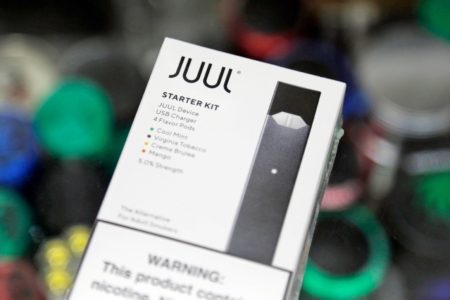August 28, 2019 – Smoking tobacco, a habit for 1.1 billion of us on the planet, kills over 8 million people each year of which 1.2 million are non-smokers exposed to second-hand smoke. The World Health Organization (WHO) describes it as a global epidemic, disproportionately affecting the poorest countries on the planet, and the biggest public health threat we face today.
Tobacco contains nicotine, an addictive drug that makes quitting smoking for most very difficult, often requiring repeated treatment. Just how addictive is it? Very because nicotine works on the same brain pathways as drugs like cocaine causing elevated levels of dopamine responsible for feelings of well-being.
An entire industry has grown up to facilitate smokers trying to quit. Whether gum, lozenges, sprays, hypnotism, or other ways to defeat the nicotine craving, smokers keep trying and failing up to 30 times before success.
On the Mayo Clinic website it provides 10 ways to quit which include some of these:
- nicotine replacement therapy
- environmental avoidance
- behaviour modification to fight the urge
- oral therapy to replace cigarettes
- physical exercise
- relaxation techniques
- local support groups
- online support groups
Nowhere does the Mayo Clinic suggest vaping as a substitute for cigarette smoking or using other tobacco-based products. And yet vaping, is marketed as a less harmful option than using tobacco products. So why doesn’t the Mayo include vaping in its top 10 ways to quit?
First of all what is vaping? It’s a technology in the form of an e-cigarette or modular device that allows a user to inhale and exhale aerosols containing a variety of chemicals, one of which is usually nicotine. Rather than lighting up a cigarette and drawing in smoke and particulate matter, vaping aerosol formulas can be calibrated to eliminate the harmful chemicals that are cancer triggers. But vaping nicotine is far from safe.
Last week the U.S. Center for Disease Control (CDC) stated that e-cigarettes and other vaping devices had caused the first mortality recorded in the country, causing severe lung disease from overexposure to the chemicals contained in vaping formulas. Stated Robert Redfield, MD, and Director of the CDC, “Vaping exposes users to many different substances for which we have little information about related harms – including flavorings, nicotine, cannabinoids, and solvents. CDC has been warning about the identified and potential dangers of e-cigarettes and vaping since these devices first appeared. E-cigarettes are not safe for youth, young adults, pregnant women, or adults who do not currently use tobacco products.”
There have been very few vaping studies, the most recent involving 31 young adults, appeared in the journal Radiology, on August 20, 2019. It looked at exposure to e-cigarettes. All subjects were healthy. All exhibited almost an instant stiffening of blood vessels. In some cases lung tissue was affected enough to cause wheezing and asthma-like symptoms. The study also noted that repeated use of e-cigarettes would likely create an increased risk of the subjects developing heart disease.
So far the practice of vaping has led to the first cases of nicotine toxicity being reported. And it appears that the medium in which the nicotine is mixed, containing propylene glycol and glycerol, is not harmless after all. Quality control issues with vaping formulas has led to impurities including particulate matter which can then lodge in the lungs.
The conclusion: vaping is turning out to be as bad for your health as smoking cigarettes. And because of the nicotine in the vaping formulas, smoking e-cigarettes and other vaping devices is just as addictive. And because vaping doesn’t have the same stigma associated with smoking, or the odours, stained teeth, and fingers that accompany the habit, it is seen as a good substitute for the cigarette habit.
For young people who have never taken up cigarettes, and never used nicotine before, vaping is drawing them to taking up the habit, reinforced by the manufacturers of vaping products who are adding appealing flavours to the chemicals in e-cigarettes.
The first vaping fatality is symptomatic of a much deeper health concern. In the last week, the CDC issued the above quoted warning along with disturbing statistics that noted along with the first recorded death, 193 cases of negative health outcomes from vaping reported in 22 states.
For users of cannabis, where vaping is often the delivery mechanism to get the mellowing high that accompanies the psychotropic components of the plant, there should be equal concern since cannabis-based vaping formulas are now on the market from e-cigarette providers.
It is also interesting to note that the tobacco companies have seen the business opportunity of this burgeoning market and are getting into it in a big way. Meanwhile early e-cigarette providers like JUUL, the current industry front runner, is shaping its products to make them more appealing to a younger audience including designing them to look like USB flash drives, and coming out with flavours like Cool Cucumber, Fruit Medley, Mango, and Mint. When you puff on a JUUL e-cigarette you’re no longer smoking, you’re JUULing. The duplicity of JUUL is transparent when you see its advertising on cable television stations like CNN where it states that e-cigarettes and vaping is not for young people. Could have fooled me with the products the company has created clearly designed and flavoured to draw in a young audience. And who has a $12.8 billion stake in JUUL? Why its Altria, the tobacco giant whose brands include Marlboro and Virginia Slims.
















